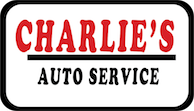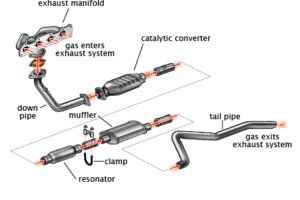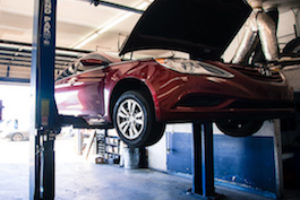New brakes are what’s best for you and your car. It is not only a safety issue, but having new brakes will give you confidence when you have precious cargo onboard.
If you are a new car owner and you have never purchased new brakes, then this article may help you with your first brake inspection.
New Brakes Save Money
Metal, adjustable clamps called brake calipers are what helps stop your car. Inside each caliper is a pair of metal plates that are bonded with friction material called brake pads. Brake pads have high-friction surfaces and serve to slow or stop the rotor. When the rotor slows or stops, so does the tire, because the rotor is attached directly to the tire.
When you push the brake pedal, it causes the calipers to clamp down on the brake pads, which in turn squeezes the rotors. This process transfers the kinetic energy of your car into thermal energy, or heat caused by friction. The friction created is what brings your car to a stop.
If the Brakes Squeal You’ll Know
Disc brakes generally give a few clear indications that it’s time for a brake job. The first is something you can hear: Once brake pads are worn to the point of needing replacement, a thin metal strip in the pads will squeal when you apply the brakes. If it happens to your car, you and your neighbors will know because screeching is not hard to hear. However, not all cars have this feature, which is called a mechanical brake-wear sensor or a brake scraper, so check to see if yours does.
A scraping or grinding noise is another sure sign that it’s time for new brakes. This could mean your metal plates are scrapping the roters, which can lead to expensive brake repairs. Worn out brakes can be dangerous on the road. Although the car may still stop, worn out brake pads won’t you stop when you need to. When the brake discs fail it can cause the brake system to fail entirely. Have any squealing or grinding noises inspectied right away.
Conduct a Visual Check
Another way to know that it’s time to replace brakes is to do a visual check. Most brake pads are viewable through the tire rim or spokes. You just might be able to see the outboard brake pad where it touches the brake disc. Make sure there is at least a quarter inch of material on the brake pad. When there is less than a quarter inch it’s time to take your car to the local auto repair shop.
What is often a cheap pad replacement can turn into an expensive brake job. If your pads are worn then you should take your car to get a brake inspection asap. Because there are four tires on your car that means you’ll have four sets of brake pads- the rear and front. They should all be inspected.
Other Indicators of Brake Issues
There are other symptoms of brake trouble that don’t involve wear to the brake pads. Maybe your car doesn’t stop as readily it as it used to. In addition, when you push the brakes the pedal almost hits the floor. Moreover, mushy or soft brakes are an indication of potential issues. There could be water or air in the brake fluid, a fluid leak in the system, or a failing brake master cylinder.
Sometimes a car will pull to one side or the other if the breaks are wearing down unevenly. There also might be a leak in one of the brake lines. However, when the car pulls to one side without braking then it’s most likey a steering or tire issue. Vibration in the brake pedal during normal braking means your rotors need attention. Good brakes will get you further because at least you’ll get there safely.



